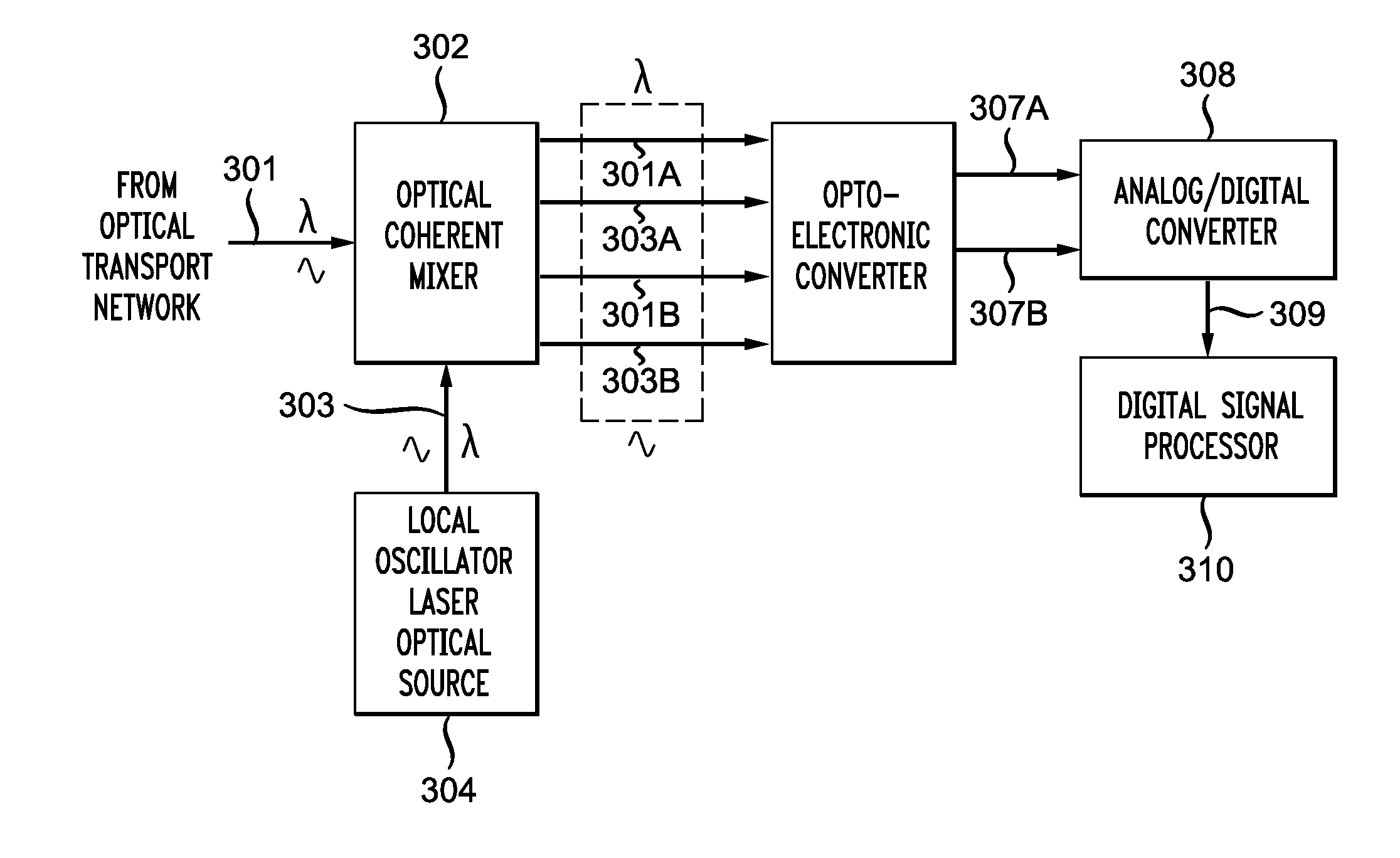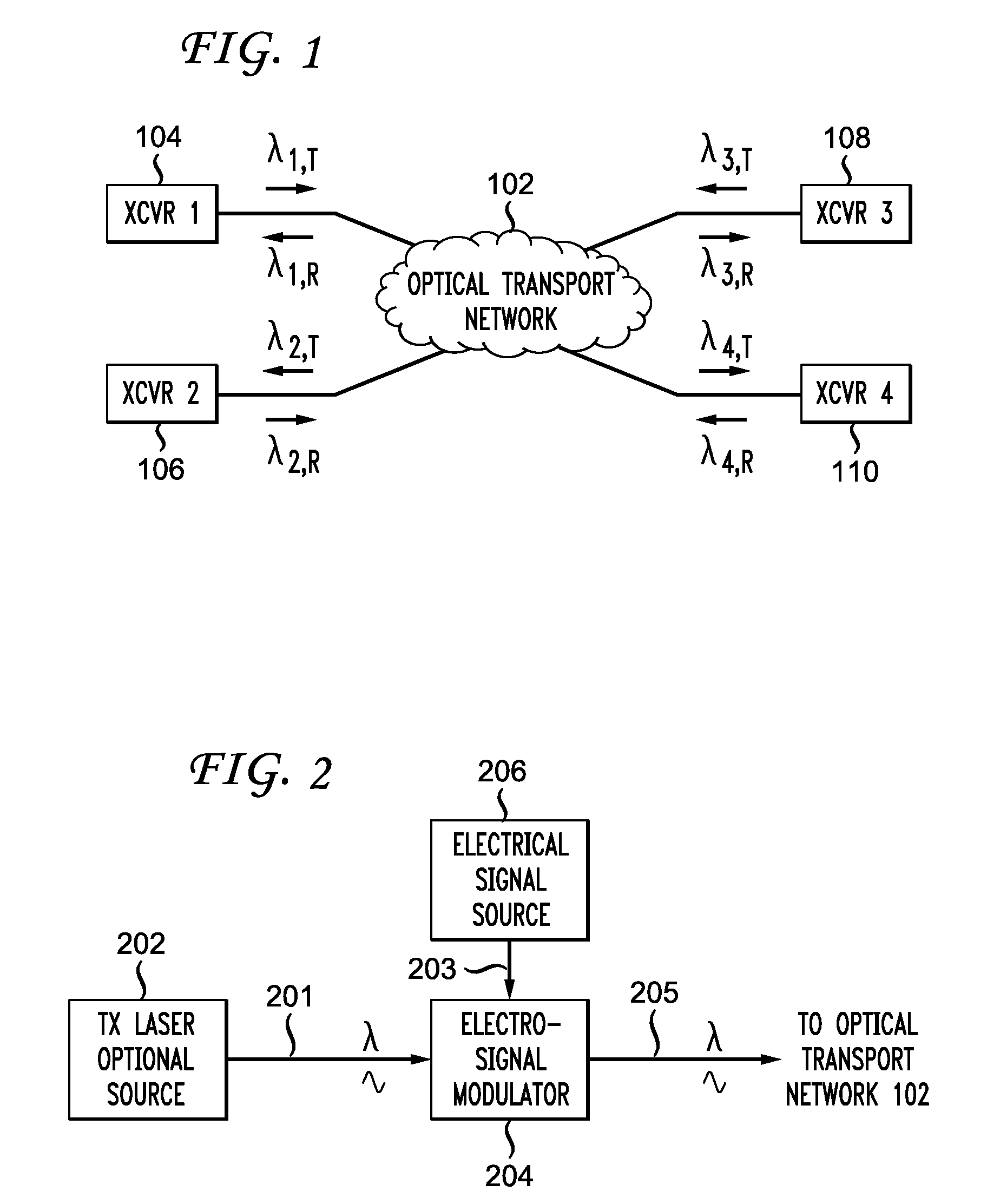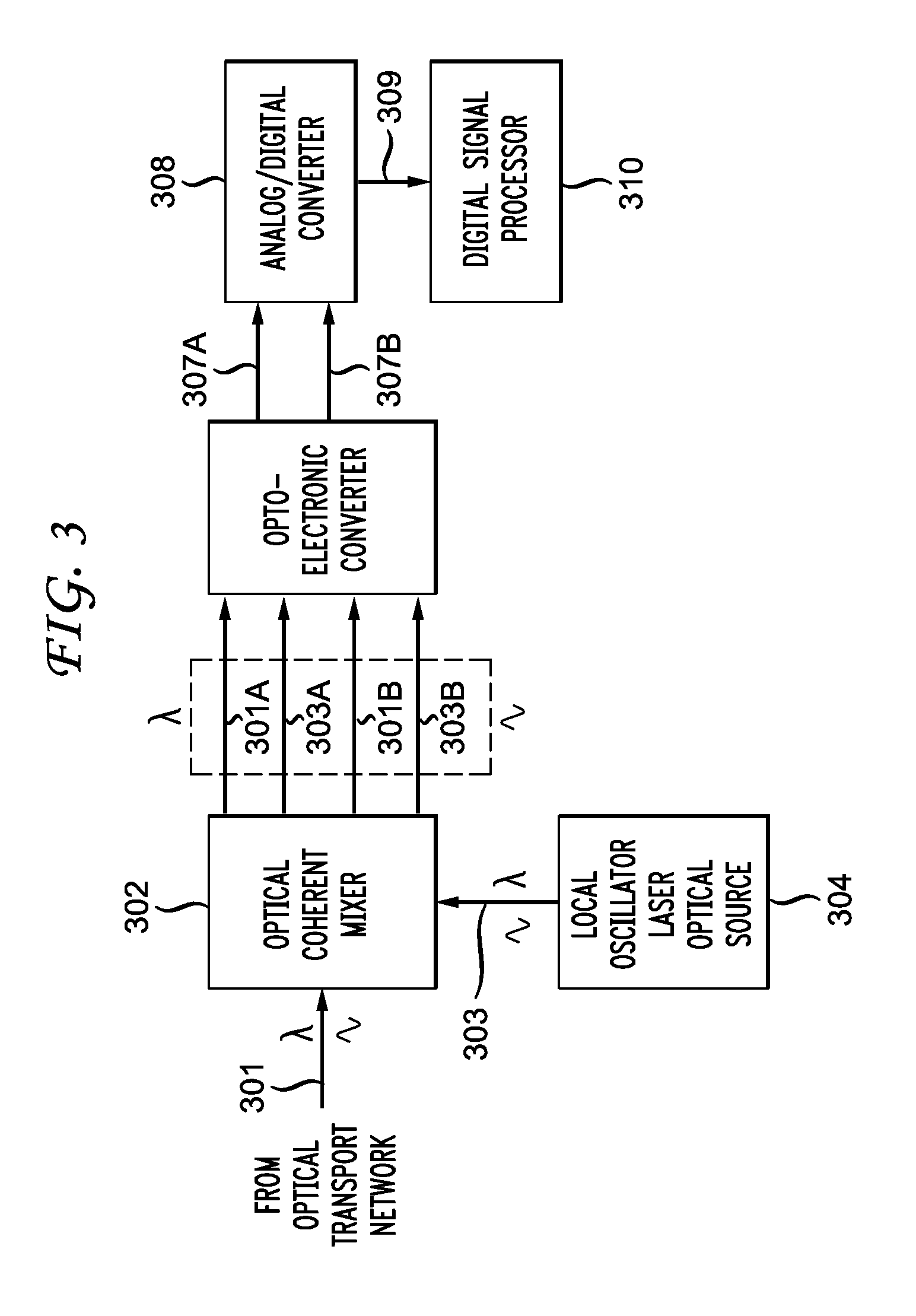Complexity reduced feed forward carrier recovery methods for m-qam modulation formats
- Summary
- Abstract
- Description
- Claims
- Application Information
AI Technical Summary
Benefits of technology
Problems solved by technology
Method used
Image
Examples
Embodiment Construction
[0029]There is a need for further reducing the implementation complexity of carrier recovery for high-order M-QAM system. Moreover, the single-stage, blind-phase search algorithm and multi-stage algorithm do not consider carrier frequency offset (the frequency offset between the signal source and the local oscillator). However, in the real world, significant carrier frequency offset (>10 MHz) may occur in many cases, especially for long-haul transmission systems using intradyne detection and coarse automatic frequency tracking techniques (Z. Tao, H. Zhang, A. Isomura, L. Li, T. Hoshida, J. C. Rasmussen, “Simple, Robust, and Wide-Range Frequency Offset Monitor for Automatic Frequency Control in Digital Coherent Receivers,” ECOC 2007, paper 03.5.4). Thus, a carrier recovery method capable of recovering the carrier phase in the presence of carrier frequency offset is also needed.
[0030]FIG. 1 shows a schematic of a generic optical telecommunications system. Multiple optical transceivers...
PUM
 Login to View More
Login to View More Abstract
Description
Claims
Application Information
 Login to View More
Login to View More - R&D
- Intellectual Property
- Life Sciences
- Materials
- Tech Scout
- Unparalleled Data Quality
- Higher Quality Content
- 60% Fewer Hallucinations
Browse by: Latest US Patents, China's latest patents, Technical Efficacy Thesaurus, Application Domain, Technology Topic, Popular Technical Reports.
© 2025 PatSnap. All rights reserved.Legal|Privacy policy|Modern Slavery Act Transparency Statement|Sitemap|About US| Contact US: help@patsnap.com



